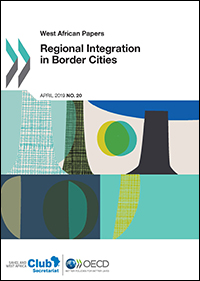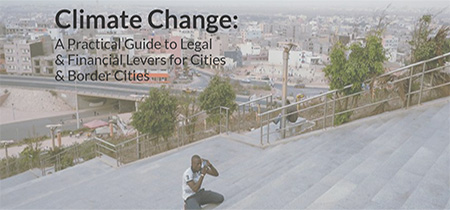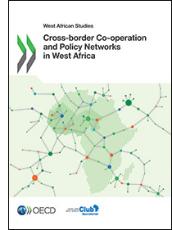Border dynamics in West Africa
West Africa is subdivided by 32 000 kilometres of land borders. Given the heterogeneity of West African border areas and in order to better adapt to local development, cross‑border co‑operation policy should be based on the resources of each region. SWAC has supported border co-operation for many years. Its work focuses on promoting the role of cross-border urban economies in building regional integration, identifying the levers for developing cross-border poles of attraction and analysing resilience to climate change. More broadly, the Secretariat provides support for regional and international strategies in order to better anticipate two major changes impacting the region: urbanisation and climate change.
Mapping border cities and accessibility
This report, composed of four West African Papers (nos. 20, 21, 22, 23) is the result of a systematic analysis of the role West African border cities play in the process of regional integration. Based on a multidimensional mapping of 18 countries, the report analyses the local dynamics that have developed in urban areas, the impact distance has on national cohesion and the impact territorial divisions have at the international level. This mapping of borders cities aims to help answer the following: What are the spatial representations of urban border centres? How is cross-border trade organised? Is there a correlation between the characteristics of border cities and their accessibility measures? How do city morphologies and accessibility influence network structure and function? How does the organisation of border trade influence the morphologies of cities in terms of their relationships to borders and their functions?
Read the four Papers:
Regional Integration in Border Cities (No. 20)
Population and Morphology of Border Cities (No. 21)
Resilience to climate change in border agglomerations
Cross-border territories, cities in particular, are or should become areas of joint responsibility and management that pool their resources to address climate and risks.
What cross-border adaptation measures could be implemented to build border intercommunality and resilience to climate risks? What sources of international funding are available to local authorities in West Africa for adaptation to climate change? What legal and governance solutions can be identified to enable communities to carry out and finance cross-border projects? How can local authorities be boosted in order to put into place adequate legal frameworks with the state for cross-border co-operation?
The work conducted by SWAC seeks to assess the current state of cross-border law and promote shared legislative and financial levers that could improve the prospects for cross-border entities to strengthen resilience to climate change in border cities.
It proposes a practical guide on the legislative and financial levers for developing cross-border initiatives on resilience to climate change. A non-exhaustive and evolving inventory of financing mechanisms for cross-border local development projects related to climate change adaptation in West Africa is also proposed. The guide is destined for the use of local authorities, members of the Sahel and West Africa Club and other development partners, regional and international organisations that want to set-up effective governance structures for cross-border projects on climate resilience.
Go to the guide
Find out more
- Cross-border Co-operation and Policy Networks in West Africa (publication)
- Cross-border Co-operation Networks in West Africa (working paper)
- Africapolis.org
- West African Long-Term Perspectives Study (WALTPS)
- Practical guide to cross-border co-operation
- Cross-Border Diaries - West African Local Realities
- Food Security and Cross-Border Trade in the Kano-Katsina-Maradi (K²M) Corridor




